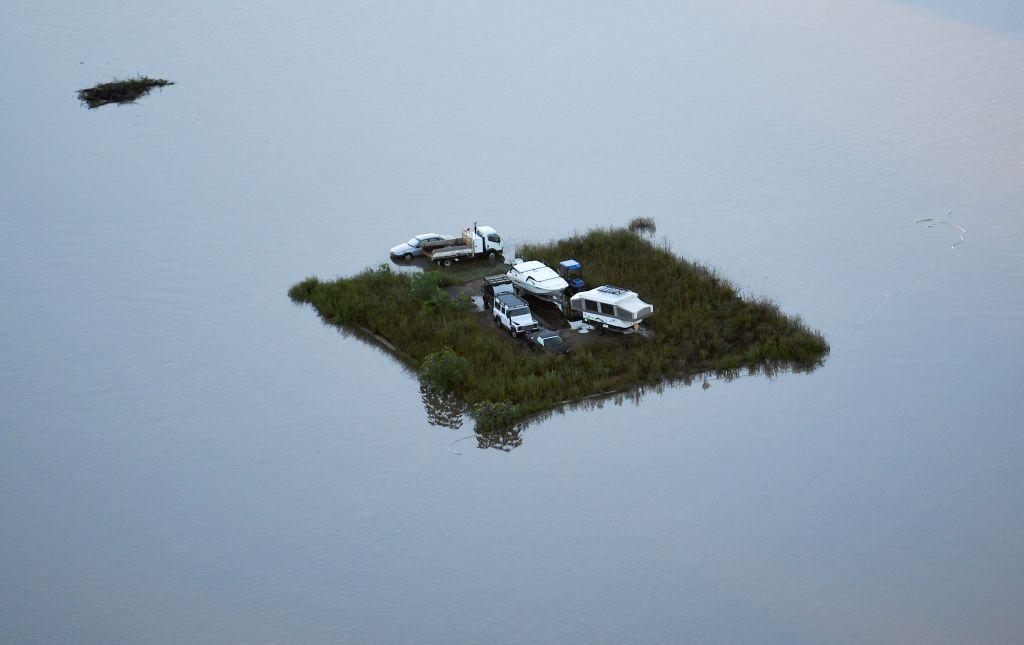Back-to-back La Niñas highlight stakes for Australia at Glasgow climate talks
Posted By Robert Glasser on November 10, 2021 @ 06:00

Before the end of this month, Australia’s Bureau of Meteorology is likely to announce [1] the arrival of a La Niña weather event, the second in two years. The announcement will be a useful reminder of the issues at stake for Australia in the climate negotiations currently underway in Glasgow.
The El Niño–Southern Oscillation [2] is the single most important source of weather variability [3] globally, including extreme temperatures, droughts, heavy rains and tropical storms. Climate change is rapidly increasing their severity [4] and extreme El Niño events are expected to double [5] in less than 10 years.
Australia is among the countries most severely [6] affected. El Niños typically bring dry conditions to eastern Australia. Nine of the 10 driest winter–spring periods on record for eastern Australia occurred during El Niño years. The severe droughts [7] of 1982, 1994, 2002, 2006 and 2015 were all associated with El Niños. The 2015–16 event significantly damaged agricultural productivity [8] and contributed to coral bleaching events on the Great Barrier Reef and an early start to the fire season. Globally, it was associated with droughts that created a humanitarian emergency affecting 60 million [9] people across four continents.
By contrast, La Niña conditions tend to increase the frequency and severity of cyclones and bring higher than average rainfall across Australia. Between 2010 and 2012 ,for example, successive [6] record-breaking La Niña events triggered devastating [10] floods in Queensland. More than 78% of the state (an area larger than France and Germany combined) was declared a disaster zone and more than 2.5 million Australians were affected. The 2010 event also had major global impacts, including in Pakistan, where extreme flooding triggered a humanitarian emergency affecting 20 million people.
In March, a La Niña contributed [11] to severe flooding across coastal New South Wales, marking the wettest week the region had experienced since recordkeeping began in 1900. Less than seven months separate the conclusion of that La Niña event and the emergence of the one likely to be announced in a matter of weeks. The BOM announcement will mean we can expect a wetter than average summer with a higher risk of cyclones and extreme rainfall.
Ordinarily, a wetter season decreases Australia’s bushfire risk [12], but it’s important to keep in mind that above average rainfall from consecutive La Niña events will also increase vegetation growth in many parts of the country, including regrowth of forests devastated during the Black Summer fires of 2019–20. That may significantly raise the bushfire risk in subsequent years, particularly given the generally hotter conditions we can expect from climate change. The summer of 2022–23 is worrying in this regard, particularly if it coincides with the emergence of an El Niño.
One of the reasons El Niño and La Niña impacts are becoming more extreme is that they’re occurring alongside climate change. In effect, El Niños are now amplifying what are already record-setting heating events. Similarly, La Niñas are amplifying cyclone risks that are increasing due to climate change, such as more destructive storm surges linked to sea-level rise. The destructiveness of these events will increase rapidly as the climate continues to warm.
Experts are also clear that our ability to reliably predict impacts will be increasingly tested. Bushfire expert David Bowman has warned that we should be prepared for big surprises. The interactions of climate change with El Niño and La Niña events and other natural climate drivers will confound our expectations of what is ‘normal’. They will increasingly contribute to compound hazards with cascading impacts that will overwhelm the resilience of Australian communities.
Australia is hugely exposed [13] to these climate hazards. Twenty per cent of our GDP and 3.9 million Australians are in areas with high to extreme risk of tropical cyclones, and about 11% of GDP and 2.2 million people are in places with high and extreme risk of bushfire.
And the costs of responding to disasters will increase rapidly. A report [14] just released by the Australian Business Roundtable for Disaster Resilience suggests that the annual cost could jump from $38 billion today to more than $90 billion by 2060. As the report also acknowledges, even this immense increase is a significant underestimate of the actual costs because the analysis assumes that climate-induced disasters will occur separately rather than simultaneously as compound events, which is much more likely.
This is the Australian climate context for the ongoing Glasgow negotiations. Australia is highly exposed to climate risks and the global window of opportunity to prevent the worst of the impacts is closing rapidly. Unlike with other policy challenges, there will be no second chance if our efforts fail. The inertia in the climate system will make it impossible to reverse the damage later.
It should be an urgent foreign policy priority for Australia, given our exceptional exposure to climate risk, to mobilise faster global reductions of greenhouse gases. But the effectiveness of our advocacy on this front will depend significantly on the credibility of our domestic measures to cut emissions. In this respect, Prime Minister Scott Morrison’s recent announcement that Australia will reduce greenhouse gases to net zero by 2050 is a step in the right direction. But we will need to demonstrate greater domestic climate ambition than this for our global advocacy to be taken seriously.
Article printed from The Strategist: https://aspistrategist.ru
URL to article: /back-to-back-la-ninas-highlight-stakes-for-australia-at-glasgow-climate-talks/
URLs in this post:
[1] likely to announce: http://www.bom.gov.au/climate/enso/outlook/
[2] El Niño–Southern Oscillation: http://www.bom.gov.au/climate/enso/history/ln-2010-12/three-phases-of-ENSO.shtml
[3] variability: https://www.pmel.noaa.gov/pubs/outstand/mcph2969/mcph2969.shtml
[4] severity: https://www.ipcc.ch/report/ar6/wg1/downloads/report/IPCC_AR6_WGI_SPM.pdf
[5] double: https://www.nature.com/articles/nclimate3351
[6] severely: http://www.bom.gov.au/climate/enso/history/La-Nina-2010-12.pdf
[7] severe droughts: http://www.bom.gov.au/climate/updates/articles/a008-el-nino-and-australia.shtml
[8] agricultural productivity: http://www.bom.gov.au/climate/updates/articles/a018.shtml
[9] 60 million: https://www.weather.gov/media/peac/presentations/ATMO%20Dep%20presentation%20Sep%2023%202016.pdf
[10] devastating: http://www.floodcommission.qld.gov.au/publications/final-report/
[11] contributed: https://www.smh.com.au/politics/nsw/la-nina-s-final-fury-20210427-p57mvj.html
[12] bushfire risk: https://www.afac.com.au/docs/default-source/bushfire-seasonal-outlook/seasonaloutlook_spring_2021_v1-0.pdf
[13] exposed: https://www.iag.com.au/natural-disasters-are-putting-billions-dollars-risk
[14] report: http://australianbusinessroundtable.com.au/our-research
Click here to print.